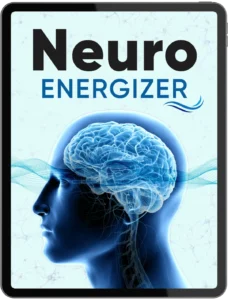If you have ever struggled with falling asleep, staying asleep, or waking up feeling truly rested, you are not alone. Millions of people worldwide suffer from sleep difficulties, ranging from occasional insomnia to chronic sleep disorders. In the quest for natural remedies, one approach that has gained massive attention in recent years is the use of binaural beats for sleep.
But do binaural beats really work? Can listening to two slightly different tones in your ears actually help you drift off faster and improve your sleep quality? In this comprehensive guide, we will explore the science behind binaural beats, how they may influence your brain, and whether they are a reliable tool for improving sleep.
What Are Binaural Beats?
Binaural beats occur when two slightly different frequencies are played in each ear through headphones. For example, if your left ear hears a tone at 200 Hz and your right ear hears a tone at 210 Hz, your brain perceives a “phantom” third tone at 10 Hz. This perceived frequency is called a binaural beat.
Researchers believe that these beats can influence brainwave activity, gently nudging your brain into different states associated with relaxation, focus, meditation, or sleep.
Brainwave Frequencies and Sleep
To understand why binaural beats are linked to better sleep, you need to know how brainwaves work:
- Delta Waves (0.5–4 Hz): Deep, restorative sleep.
- Theta Waves (4–8 Hz): Drowsiness, early sleep stages, deep meditation.
- Alpha Waves (8–12 Hz): Calm but awake, relaxed state.
- Beta Waves (12–30 Hz): Alert, active thinking, problem-solving.
- Gamma Waves (30+ Hz): High-level cognition, creativity, and focus.
When you listen to binaural beats tuned to delta or theta frequencies, your brain may be encouraged to align with these slower rhythms, promoting relaxation and sleep.
How Binaural Beats Might Help You Sleep
- Inducing Relaxation
Many people report feeling calmer after just 10–20 minutes of listening. This relaxation may help reduce racing thoughts that often prevent you from falling asleep. - Reducing Anxiety and Stress
Stress is one of the biggest sleep disruptors. Binaural beats can lower cortisol levels and trigger a state similar to meditation, making it easier to unwind before bed. - Improving Sleep Onset
If you struggle with lying in bed for hours before falling asleep, binaural beats might help you enter a theta state more quickly. - Enhancing Deep Sleep Stages
Some studies suggest that binaural beats may increase the amount of slow-wave sleep, which is the most restorative stage of the sleep cycle.
What the Science Says
The scientific community is still debating the effectiveness of binaural beats, but several studies provide promising insights:
- A 2018 study published in Frontiers in Human Neuroscience found that participants exposed to delta binaural beats experienced longer deep-sleep stages.
- A 2019 review concluded that binaural beats may reduce anxiety, which indirectly supports better sleep quality.
- However, not all studies agree—some show minimal effects, suggesting that individual response plays a big role.
In other words, binaural beats are not a guaranteed cure for insomnia, but they may be a helpful tool, especially when combined with healthy sleep habits.
How to Use Binaural Beats for Sleep
If you want to experiment with binaural beats, here are some practical tips:
- Use Headphones or Earbuds
Binaural beats only work when each ear hears a different frequency, so stereo headphones are essential. - Choose the Right Frequency
For sleep, look for delta (0.5–4 Hz) or theta (4–8 Hz) beats. Avoid beta or gamma frequencies at night, as they can make your brain more alert. - Listen for 15–30 Minutes Before Bed
Many people find that listening while winding down (instead of while already in bed) helps them transition smoothly into sleep. - Combine with Relaxation Practices
Try pairing binaural beats with deep breathing, progressive muscle relaxation, or gentle stretching to enhance their effects. - Be Consistent
Like meditation, binaural beats may work better when used regularly over time rather than as a one-time fix.
Potential Downsides and Precautions
While generally considered safe, binaural beats may not be for everyone. Some people report:
- Mild dizziness or headaches
- Feeling overstimulated if listening to the wrong frequencies
- Limited results if they expect instant effects
If you have a history of seizures, consult your doctor before using binaural beats, as sound-based brainwave entrainment may not be suitable for everyone.
Alternatives and Complements to Binaural Beats
If binaural beats alone don’t improve your sleep, consider combining them with other natural sleep aids:
- White noise or pink noise to block disruptive sounds
- Guided meditations for relaxation
- Weighted blankets to reduce anxiety
- Magnesium or melatonin supplements (consult a healthcare provider first)
- Cognitive Behavioral Therapy for Insomnia (CBT-I), the gold standard for chronic sleep issues
Final Verdict: Can Binaural Beats Help You Sleep Better?
The truth is, binaural beats are not a magical solution to sleep problems, but they can be a powerful non-invasive tool to encourage relaxation and improve sleep quality for many people. If you are curious, it’s worth trying them as part of a broader nighttime routine.
Remember: good sleep hygiene—like going to bed at the same time, limiting screen time, and creating a calm bedroom environment—is still the foundation of healthy sleep. Binaural beats are best seen as a complementary practice, not a replacement for lifestyle changes.
Key Takeaways
- Binaural beats work by creating an auditory illusion that may influence brainwave states.
- Delta and theta frequencies are most effective for sleep and relaxation.
- Scientific evidence is promising but mixed, with individual results varying widely.
- Safe, easy to try, and best combined with other healthy sleep practices.
If you’re looking for a natural, drug-free method to fall asleep faster and stay asleep longer, binaural beats may be worth exploring. With consistency and the right approach, they could become your nighttime secret weapon for deeper, more restorative rest.
Click here to discover how to awaken your inner Einstein-level genius >>

